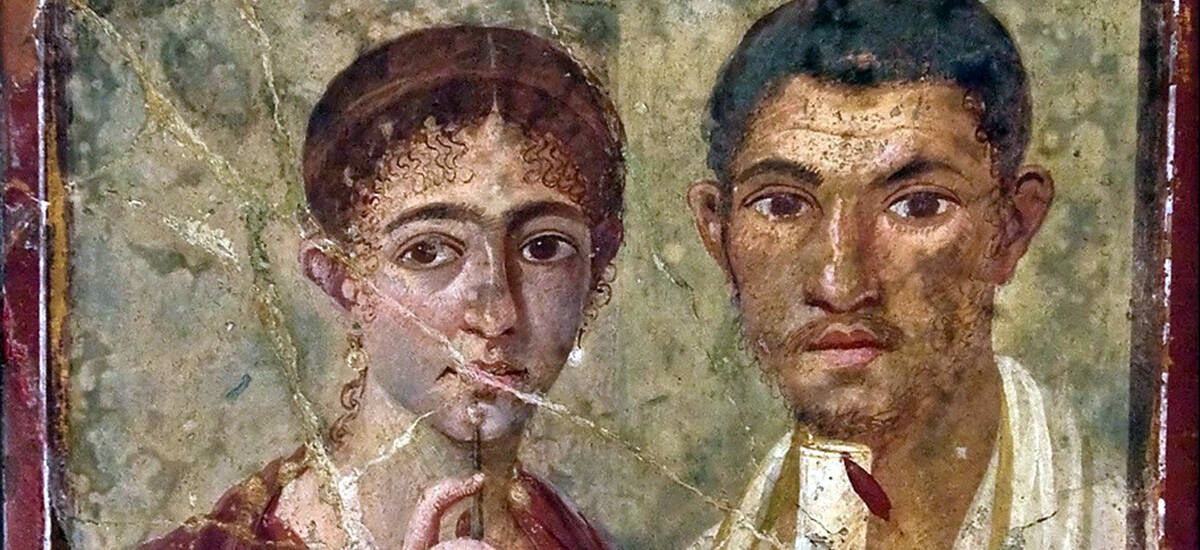Roman Daily LifeAn Online NEH Summer Seminar, July 12-30, 2021 for K-12 Teachers
The most important and engaging sources for Roman daily life are the Satyricon of Petronius and the city of Pompeii. This three-week online summer seminar for K-12 teachers offers an opportunity to explore various topics of Roman daily life through an in-depth examination of these two bodies of evidence.
The core of the seminar experience will be the daily translation and discussion of the Latin text of Petronius’ Satyricon. We will also investigate every corner of Pompeii, from its grandest houses to its inns, forum, baths, bars, and brothel, including concentrated time every afternoon reading together the epigraphy from the ancient Bay of Naples. Through our analysis of all types of evidence, from wall paintings to architecture to graffiti, we will develop our understanding of many aspects of Roman daily life including food, sex, slavery, fashion, friendship, entertainment, education, work, and death. In addition, we will continually work to approach this material from the vantage point of those at the margins, especially women, slaves and freedmen, children, and non-Romans.
The potential benefits of studying Roman daily life are twofold. First, it deepens our understanding of the ancient Roman world as it existed for most of its inhabitants. Given the nature of our sources, the field of classics tends to focus on elite concerns. Yet there were many more people - slaves, freedmen, women, the middle and lower classes - living their daily lives than we see in the writings of Vergil, Ovid, or Caesar.

Second, this shift in perspective can have a
transformative effect on our students. Students are excited by social history. They are drawn to understand the daily concerns and activities of ordinary people. I can still remember the excitement I felt when I first started reading Pompeian graffiti. It was as if a window had been opened that allowed me to watch Pompeians greet their friends, attend gladiatorial games, or go to the baths. Not only did they become real for me as I read their own writing on these ordinary activities and concerns, but the graffiti also led me to deeper, more complex questions. I am currently working on a graffito from a guest room in a Pompeian inn that lists various items and prices, purchased over 7 continuous days. Most days include only bread, oil and wine, but one of the days stands out: there is unusual and expensive food (beef, small sausages, soft cheese, nuts and dried fruit), additional furniture, incense, a dancing girl, and even another guest is mentioned. It is clearly a party, something smaller and cheaper yet recognizably similar to the parties we see in Petronius’ novel.

The thrill of seeing the primary evidence for daily life and being able to share that with your students is part of what I am hoping you take away from the seminar. At the same time, aspects of daily life can serve as springboards for deeper historical questions: What was the social role of dining in Roman society? What do these goods and prices tell us about the Roman economy? What are the implications of this kind of diet on people’s health and life expectancy? To what extent did the material comforts associated with the Roman Empire make its subjects more willing to tolerate its rule? And how do we judge the historical value of literature alongside the evidence of archaeology? It is in this deeper questioning and reflection on the similarities and differences between our own daily life and that of the Romans, that we can help our students develop a deeper historical awareness.
